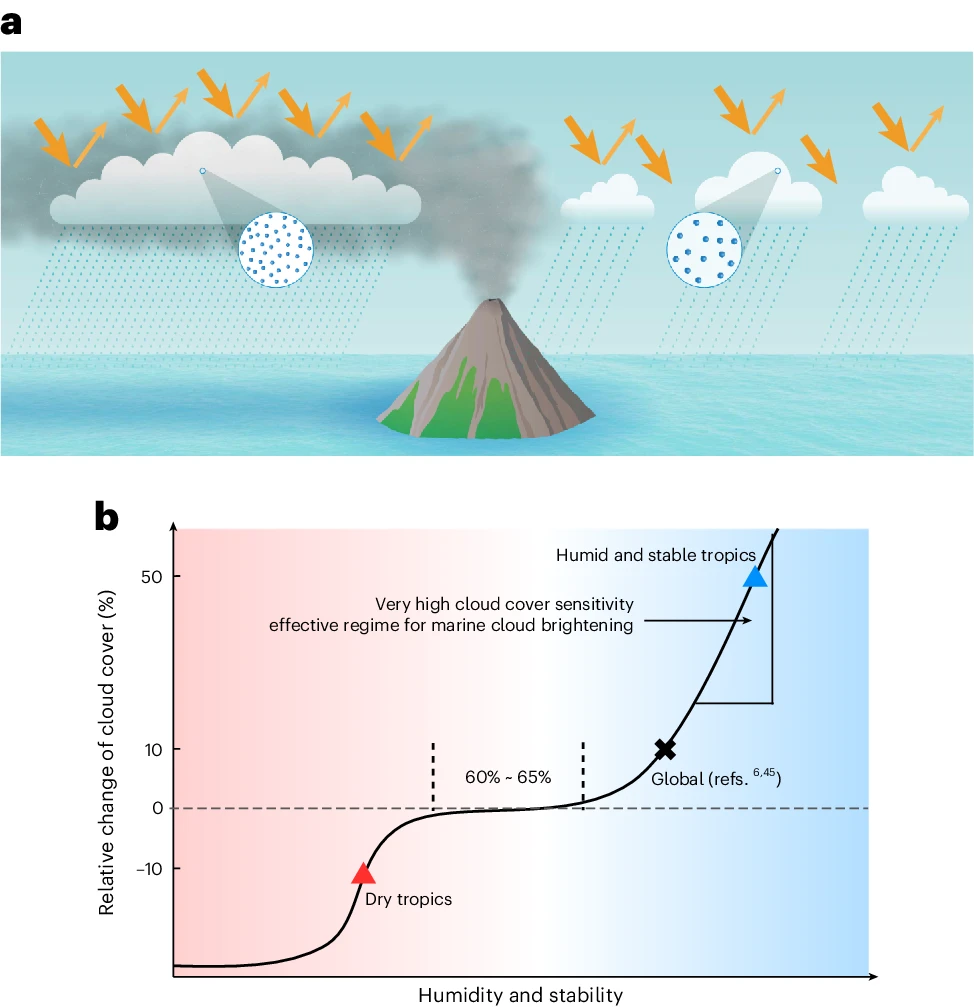News Excerpt:
Recently, researchers combined machine learning and long-term satellite observations to quantify aerosol fingerprints on tropical marine clouds, using degassing volcanic events in Hawaii as natural experiences.
- They found that cloud cover increased relatively by 50% in a humid and stable atmosphere, leading to strong cooling radiative forcing.
Key highlights of the study:
- The recent study provided observational evidence of a strong cloud cover response to aerosol perturbations over the North Atlantic, suggesting a strong aerosol cooling that is under-represented in most state-of-the-art global climate models.
- This implies that climate sensitivity could be underestimated and that the +1.5 degree Celsius target in the Paris Agreement is in peril because strong aerosol-induced cooling implies a high climate sensitivity and a much hotter future.
About Marine Cloud Brightening (MCB):
- The basic principle behind the idea is to seed marine stratocumulus clouds with seawater aerosol generated at or near the ocean surface.
- These particles would have sufficiently large salt-mass to ensure their subsequent growth within the clouds without being so large as to encourage precipitation formation and would be sufficiently numerous to enhance the cloud droplet number concentration to values substantially higher than the natural ones, thereby enhancing the cloud albedo.
- Enhancing the droplet concentration affects the cloud's macrophysical properties, such as cloud cover, longevity, liquid water content and thickness, as a consequence of inhibiting precipitation formation and the timescale for the evaporation and sedimentation of cloud droplets.

Implications:
- The observational evidence of strong aerosol cooling via interactions with tropical marine clouds implies that the high end of climate sensitivity is possible.
- The findings indicate that MCB could be more effective for climate intervention than global climate models have suggested because cloud cover responses are strong and constitute 60–90% of aerosol cooling, which has not been effectively accounted for in global climate models.
- The best practice to conduct MCB would be in humid and stable conditions.
- However, MCB should be considered as a pain killer, as it does not address the cause of warming from anthropogenic greenhouse gases.
- Furthermore, researchers are far from a complete understanding of the risks or side-effects of MCB, so further research is needed.
- Even though researchers quantified aerosol fingerprints on trade-wind cumulus, the process-level understanding of these impacts is urgently needed in future studies to improve climate projections and inform climate intervention strategies.
- Cloud-resolving modelling, constrained by our observational evidence, would advance our understanding of aerosol fingerprints on clouds and the most important associated physiochemical atmospheric processes.


